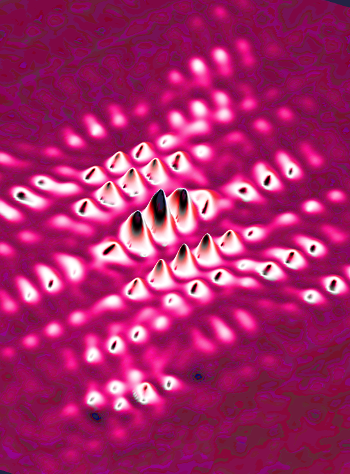Study plots dot sizes
 Australian researchers have come up with a new process for calculating the perfect size and density of quantum dots in solar panels, which could topple efficiency records.
Australian researchers have come up with a new process for calculating the perfect size and density of quantum dots in solar panels, which could topple efficiency records.
Quantum dots are man-made nanocrystals 100,000 times thinner than a sheet of paper. They are gaining use as light sensitisers, absorbing infrared and visible light and transferring it to other molecules.
Quantum dots could enable new types of solar panels to capture more of the light spectrum and generate more electrical current, through a process of ‘light fusion’ known as photochemical upconversion.
Researchers from the ARC Centre of Excellence in Exciton Science have now used lead sulfide quantum dots in new experiments that seek to find the perfect balance to boost solar efficiency.
Previous upconversion results achieved by test devices used organic sensitisers that do not work with silicon solar cells, which are currently the most commonly available type of photovoltaics technology.
Using the right size and density of lead sulfide quantum dots as sensitisers would not only lead to efficiency increases but also be compatible with nearly all existing and planned solar cell technology.
The experiments have revealed that when it comes to quantum dots in solar cells, bigger is not always better.
It may be reasonable to assume that a larger quantum dot would capture more of the colours of sunlight, or more light of a certain wavelength, and be able to help create a device with higher efficiency.
However, the researchers say there are important practical constraints on quantum dot size that must be accounted for.
Most importantly, the near infrared part of sunlight at the Earth’s surface has a complicated structure, influenced by water in the atmosphere and the sun’s heat.
This means the colour of the quantum dot must be tuned to match the peaks of sunlight, like adjusting a musical instrument to a certain pitch.
Researcher Dr Laszlo Frazer says that a complete picture of the conditions influencing solar cell performance, from the star at the centre of our solar system to nanoscale particles, is necessary to achieve peak efficiency.
“This whole thing requires understanding of the sun, the atmosphere, the solar cell and the quantum dot,” he said.
While the projected efficiency increases demonstrated by these results remain modest, the potential benefits are considerable, as they can be used in nearly all solar devices, including those made from silicon.
The next step for researchers is to design and create emitters that will transfer energy from the optimised quantum dot sensitisers most effectively.
“This work tells us a lot about the capturing of light,” Dr Laszlo said.
“Releasing it again is something that needs a lot of improvement. There’s definitely a need for multidisciplinary contributions here.”







 Print
Print